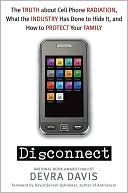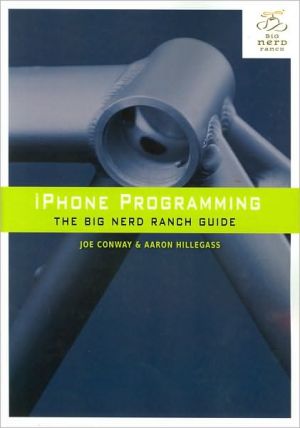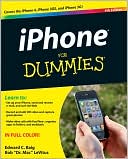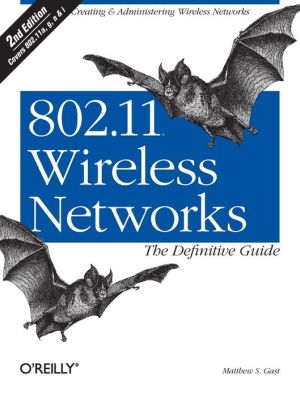Digital Radio System Design
A systematic explanation of the principles of radio systems, Digital Radio System Design offers a balanced treatment of both digital transceiver modems and RF front-end subsystems and circuits. It provides an in-depth examination of the complete transceiver chain which helps to connect the two topics in a unified system concept. Although the book tackles such diverse fields it treats them in sufficient depth to give the designer a solid foundation and an implementation perspective.\ Covering...
Search in google:
A systematic explanation of the principles of radio systems, Digital Radio System Design offers a balanced treatment of both digital transceiver modems and RF front-end subsystems and circuits. It provides an in-depth examination of the complete transceiver chain which helps to connect the two topics in a unified system concept. Although the book tackles such diverse fields it treats them in sufficient depth to give the designer a solid foundation and an implementation perspective. Covering the key concepts and factors that characterise and impact radio transmission and reception, the book presents topics such as receiver design, noise and distortion. Information is provided about more advanced aspects of system design such as implementation losses due to non-idealities. Providing vivid examples, illustrations and detailed case-studies, this book is an ideal introduction to digital radio systems design. Offers a balanced treatment of digital modem and RF front-end design concepts for complete transceiversPresents a diverse range of topics related to digital radio design including advanced transmission and synchronization techniques with emphasis on implementationProvides guidance on imperfections and non-idealities in radio system designIncludes detailed design case-studies incorporating measurement and simulation results to illustrate the theory in practice
Preface xiii1 Radio Communications: System Concepts, Propagation and Noise 11.1 Digital Radio Systems and Wireless Applications 21.1.1 Cellular Radio Systems 21.1.2 Short- and Medium-range Wireless Systems 31.1.3 Broadband Wireless Access 61.1.4 Satellite Communications 61.2 Physical Layer of Digital Radio Systems 71.2.1 Radio Platform 71.2.2 Baseband Platform 91.2.3 Implementation Challenges 101.3 Linear Systems and Random Processes 111.3.1 Linear Systems and Expansion of Signals in Orthogonal Basis Functions 111.3.2 Random Processes 121.3.3 White Gaussian Noise and Equivalent Noise Bandwidth 151.3.4 Deterministic and Random Signals of Bandpass Nature 161.4 Radio Channel Characterization 191.4.1 Large-scale Path Loss 191.4.2 Shadow Fading 221.4.3 Multipath Fading in Wideband Radio Channels 221.5 Nonlinearity and Noise in Radio Frequency Circuits and Systems 321.5.1 Nonlinearity 321.5.2 Noise 381.6 Sensitivity and Dynamic Range in Radio Receivers 441.6.1 Sensitivity and Dynamic Range 441.6.2 Link Budget and its Effect on the Receiver Design 441.7 Phase-locked Loops 461.7.1 Introduction 461.7.2 Basic Operation of Linear Phase-locked Loops 461.7.3 The Loop Filter 481.7.4 Equations and Dynamic Behaviour of the Linearized PLL 501.7.5 Stability of Phase-locked Loops 531.7.6 Phase Detectors 551.7.7 PLL Performance in the Presence of Noise 591.7.8 Applications of Phase-locked Loops 60References 622 Digital Communication Principles 652.1 Digital Transmission in AWGN Channels 652.1.1 Demodulation by Correlation 652.1.2 Demodulation by Matched Filtering 672.1.3 The Optimum Detector in the Maximum Likelihood Sense 692.1.4 Techniques for Calculation of Average Probabilities of Error 722.1.5 M-ary Pulse Amplitude Modulation (PAM) 732.1.6 Bandpass Signalling 752.7.7 M-ary Phase Modulation 822.1.8 Offset QPSK 892.1.9 Quadrature Amplitude Modulation 902.1.10 Coherent Detection for Nonideal Carrier Synchronization 932.1.11 M-ary Frequency Shift Keying 962.1.12 Continuous Phase FSK 982.1.13 Minimum Shift Keying 1032.1.14 Noncoherent Detection 1062.1.15 Differentially Coherent Detection (M-DPSK) 1072.2 Digital Transmission in Fading Channels 1122.2.1 Quadrature Amplitude Modulation 1122.2.2 M-PSK Modulation 1132.2.3 M-FSK Modulation 1132.2.4 Coherent Reception with Nonideal Carrier Synchronization 1142.2.5 Noncoherent M-FSK Detection 1162.3 Transmission Through Band-limited Channels 1172.3.1 Introduction 1172.3.2 Baseband Transmission Through Bandlimited Channels 1202.3.3 Bandlimited Signals for Zero ISI 1222.3.4 System Design in Band-limited Channels of Predetermined Frequency Response 1252.4 Equalization 1282.4.1 Introduction 1282.4.2 Sampled-time Channel Model with ISI and Whitening Filter 1312.4.3 Linear Equalizers 1342.4.4 Minimum Mean Square Error Equalizer 1362.4.5 Detection by Maximum Likelihood Sequence Estimation 1372.4.6 Decision Feedback Equalizer 1382.4.7 Practical Considerations 1392.4.8 Adaptive Equalization 1402.5 Coding Techniques for Reliable Communication 1412.5.1 Introduction 1412.5.2 Benefits of Coded Systems 1432.5.3 Linear Block Codes 1432.5.4 Cyclic Codes 1452.6 Decoding and Probability of Error 1472.6.1 Introduction 1472.6.2 Convolutional Codes 1512.6.3 Maximum Likelihood Decoding 1542.6.4 The Viterbi Algorithm for Decoding 1562.6.5 Transfer Function for Convolutional Codes 1572.6.6 Error Performance in Convolutional Codes 1582.6.7 Turbo Codes 1592.6.8 Coded Modulation 1622.6.9 Coding and Error Correction in Fading Channels 164References 1683 RF Transceiver Design 1733.1 Useful and Harmful Signals at the Receiver Front-End 1733.2 Frequency Downconversion and Image Reject Subsystems 1753.2.1 Hartley Image Reject Receiver 1773.2.2 Weaver Image Reject Receiver 1803.3 The Heterodyne Receiver 1833.4 The Direct Conversion Receiver 1853.4.1 DC Offset 1863.4.2 I-Q Mismatch 1883.4.3 Even-Order Distortion 1893.4.4 1/f Noise 1893.5 Current Receiver Technology 1903.5.1 Image Reject Architectures 1903.5.2 The Direct Conversion Architecture 2063.6 Transmitter Architectures 2083.6.1 Information Modulation and Baseband Signal Conditioning 2093.6.2 Two-stage Up-conversion Transmitters 2103.6.3 Direct Upconversion Transmitters 211References 2114 Radio Frequency Circuits and Subsystems 2154.1 Role of RF Circuits 2164.2 Low-noise Amplifiers 2194.2.1 Main Design Parameters of Low-noise Amplifiers 2194.2.2 LNA Configurations and Design Trade-offs 2224.3 RF Receiver Mixers 2274.3.1 Design Considerations for RF Receiver Mixers 2274.3.2 Types of Mixers 2284.3.3 Noise Figure 2324.3.4 Linearity and Isolation 2354.4 Oscillators 2354.4.1 Basic Theory 2354.4.2 High-frequency Oscillators 2394.4.3 Signal Quality in Oscillators 2414.5 Frequency-Synthesizers 2434.5.1 Introduction 2434.5.2 Main Design Aspects of Frequency Synthesizers 2444.5.3 Synthesizer Architectures 2474.5.4 Critical Synthesizer Components and their Impact on the System Performance 2534.5.5 Phase Noise 2564.6 Downconverter Design in Radio Receivers 2584.6.1 Interfaces of the LNA and the Mixer 2584.6.2 Local Oscillator Frequency Band and Impact of Spurious Frequencies 2614.6.3 Matching at the Receiver Front-end 2614.7 RF Power Amplifiers 2634.7.1 General Concepts and System Aspects 2634.7.2 Power Amplifier Configurations 2644.7.3 Impedance Matching Techniques for Power Amplifiers 2714.7.4 Power Amplifier Subsystems for Linearization 273References 2735 Synchronization, Diversity and Advanced Transmission Techniques 2775.1 TFR Timing and Frequency Synchronization in Digital Receivers 2775.1.1 Introduction 2775.1.2 ML Estimation (for Feedback and Feed-forward) Synchronizers 2805.1.3 Feedback Frequency/Phase Estimation Algorithms 2825.1.4 Feed-forward Frequency/Phase Estimation Algorithms 2865.1.5 Feedback Timing Estimation Algorithms 2915.1.6 Feed-forward Timing Estimation Algorithms 2935.2 Diversity 2955.2.1 Diversity Techniques 2955.2.2 System Model 2965.2.3 Diversity in the Receiver 2975.2.4 Implementation Issues 3025.2.5 Transmitter Diversity 3045.3 OFDM Transmission 3065.3.1 Introduction 3065.3.2 Transceiver Model 3095.3.3 OFDM Distinct Characteristics 3125.3.4 OFDM Demodulation 3135.3.5 Windowing and Transmitted Signal 3145.3.6 Sensitivities and Shortcomings of OFDM 3155.3.7 Channel Estimation in OFDM Systems 3395.4 Spread Spectrum Systems 3425.4.1 Introduction and Basic Properties 3425.4.2 Direct Sequence Spread Spectrum Transmission and Reception 3485.4.3 Frequency Hopping SS Transmission and Reception 3505.4.4 Spread Spectrum for Multiple Access Applications 3525.4.5 Spreading Sequences for Single-user and Multiple Access DSSS 3585.4.6 Code Synchronization for Spread Spectrum Systems 3635.4.7 The RAKE Receiver 365References 3686 System Design Examples 3716.1 The DECT Receiver 3716.1.1 The DECT Standard and Technology 3716.1.2 Modulation and Detection Techniques for DECT 3726.1.3 A DECT Modem for a Direct Conversion Receiver Architecture 3756.2 QAM Receiver for 61 Mb/s Digital Microwave Radio Link 3946.2.1 System Description 3946.2.2 Transmitter Design 3966.2.3 Receiver Design 3976.2.4 Simulation Results 4036.2.5 Digital Modem Implementation 4066.3 OFDM Transceiver System Design 4166.3.1 Introduction 4166.3.2 Channel Estimation in Hiperlan/2 4186.3.3 Timing Recovery 4236.3.4 Frequency Offset Correction 4246.3.5 Implementation and Simulation 435References 438Index 441








